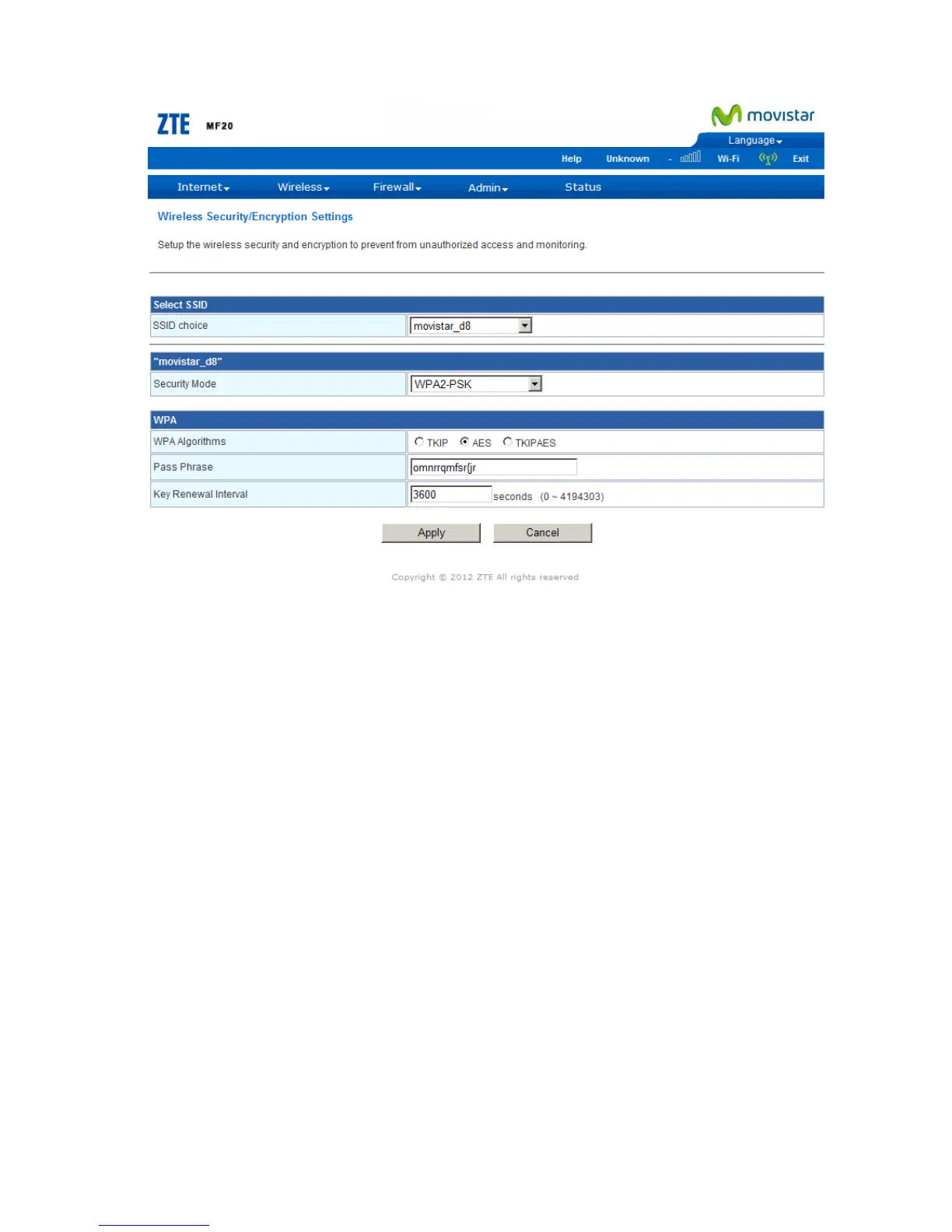WPA-PSK: Clients using WPA with a Pre-shared Key are accepted for authentication.
WPA2-PSK: Clients using WPA2 with a Pre-shared Key are accepted for authentication.
WPAPSKWPA2PSK: Clients using WPA or WPA2 with a Pre-shared Key are accepted
for authentication.
WPA Algorithms: Selects the data encryption type to use.
TKIP: Uses Temporal Key Integrity Protocol (TKIP) keys for encryption. WPA specifies
TKIP as the data encryption method to replace WEP. TKIP avoids the problems of
WEP static keys by dynamically changing data encryption keys.
AES: Uses Advanced Encryption Standard (AES) keys for encryption. WPA2 uses AES
Counter-Mode encryption with Cipher Block Chaining Message Authentication
Code (CBC-MAC) for message integrity. The AES Counter-Mode/CBCMAC
Protocol (AESCCMP) provides extremely robust data confidentiality using a 128 bit
key. Use of AES-CCMP encryption is specified as a standard requirement for
WPA2. Before implementing WPA2 in the network, be sure client devices are
upgraded to WPA2-compliant hardware.
TKIP/AES: Uses either TKIP or AES keys for encryption. WPA and WPA2 mixed modes
allow both WPA and WPA2 clients to associate to a common SSID. In mixed mode,
the unicast encryption type (TKIP or AES) is negotiated for each client.
Pass phrase: Enter a pass phrase encryption key format.
Key Renewal Interval: Sets the time period for automatically changing data encryption
keys and redistributing them to all connected clients. (Default: 3600 seconds)
Access Policy: The access policy can be set to allow or reject specific station MAC addresses.
Add a station MAC: Enter the MAC address of the station that you want to filter.
